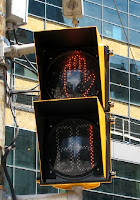 In our discussion it became obvious that running such public displays comes with a lot of responsibilities and that people are very quick at complaining about content (may it be censorship or offending content). This leads then to more or less closed and controlled system – but I wonder if we are not overcautious or the expectations around us are too high.
In our discussion it became obvious that running such public displays comes with a lot of responsibilities and that people are very quick at complaining about content (may it be censorship or offending content). This leads then to more or less closed and controlled system – but I wonder if we are not overcautious or the expectations around us are too high.
I took a picture of one door in a restroom in the University. It is converted in a public display by people (anonymously) using a pen – and its content is neither politically correct nor suitable for children. However this is rightly blamed on the people who do the damage and not on the administration or designer that decided that the doors are white and made of a material one can write on.













